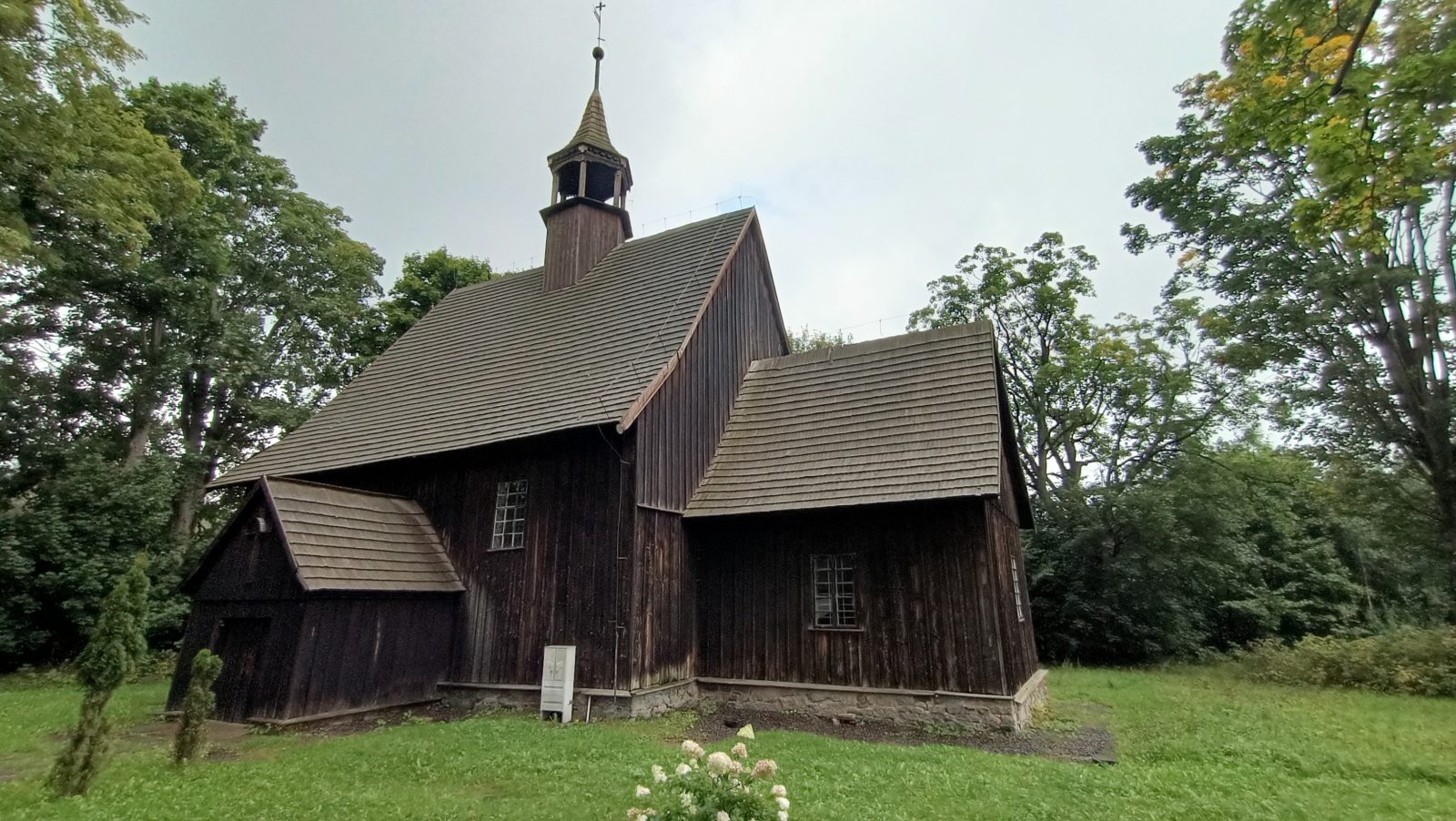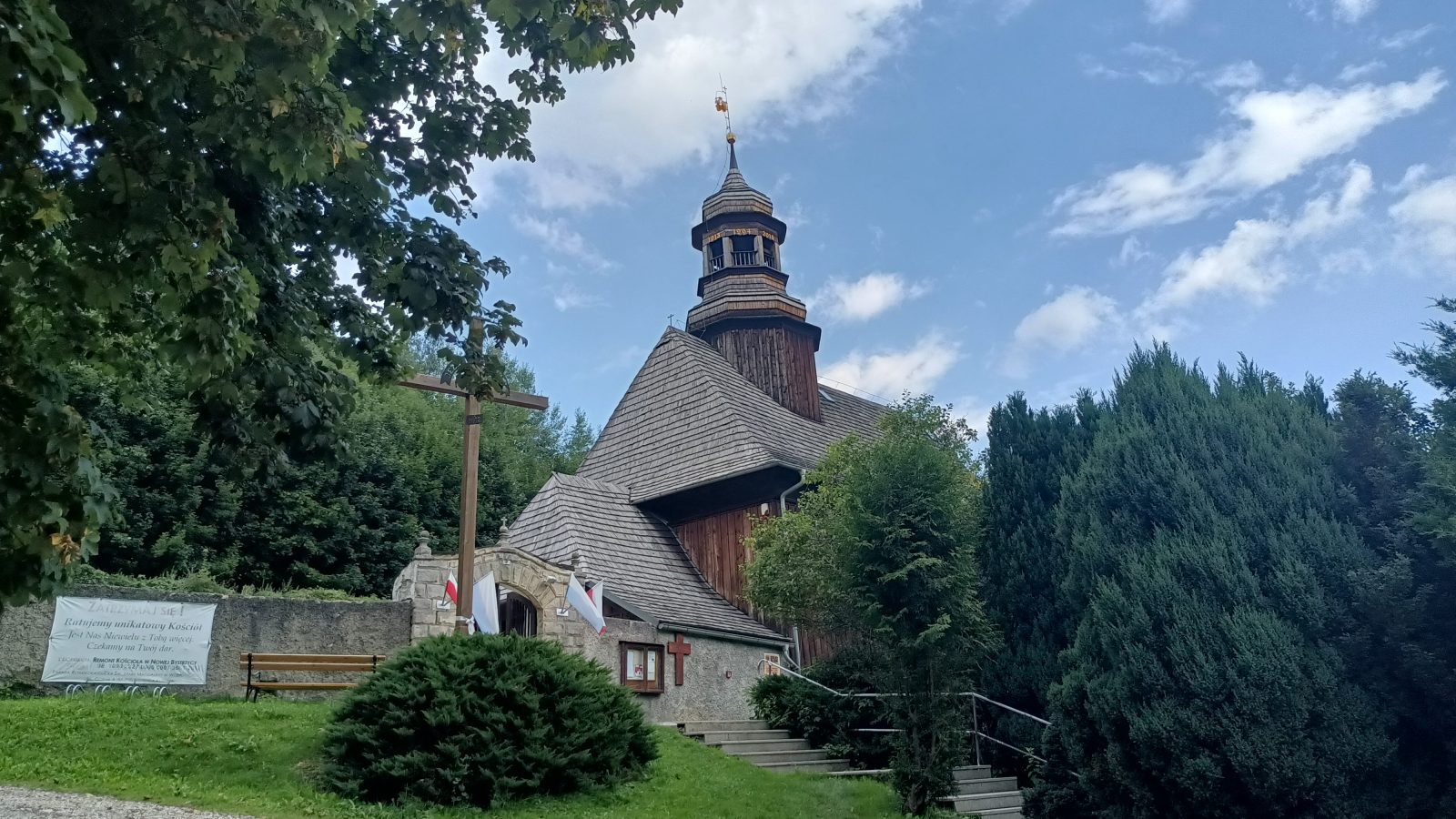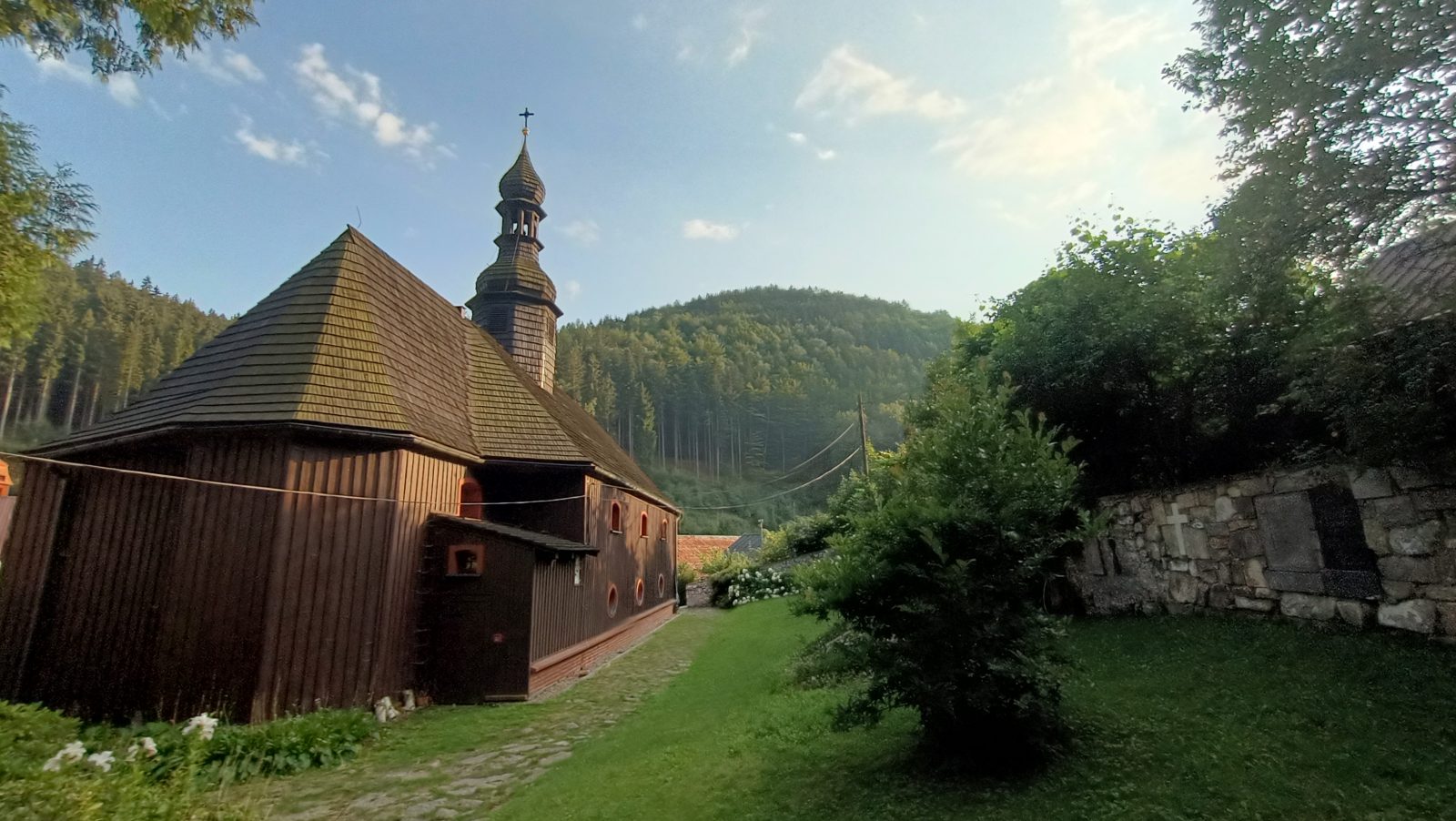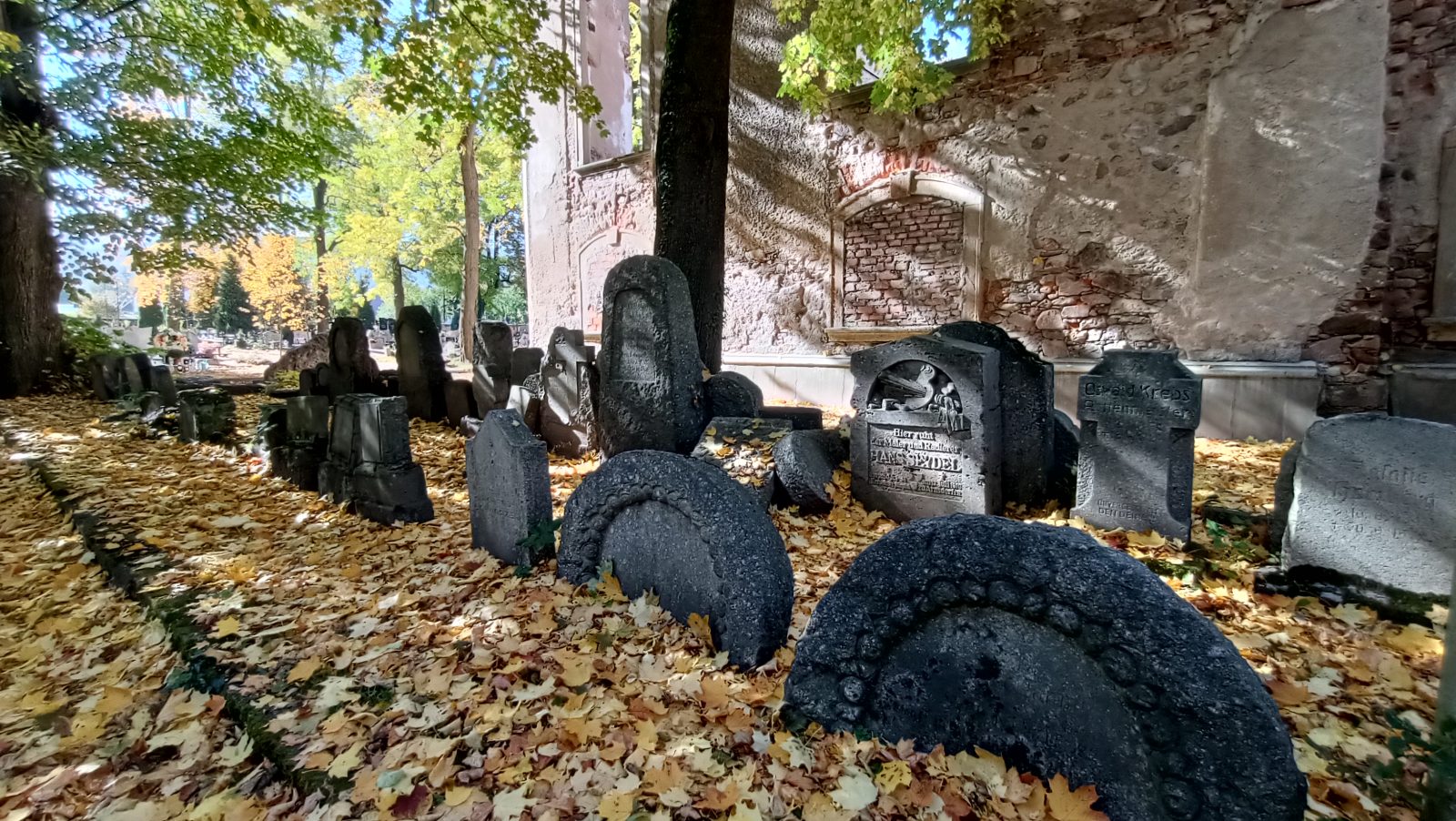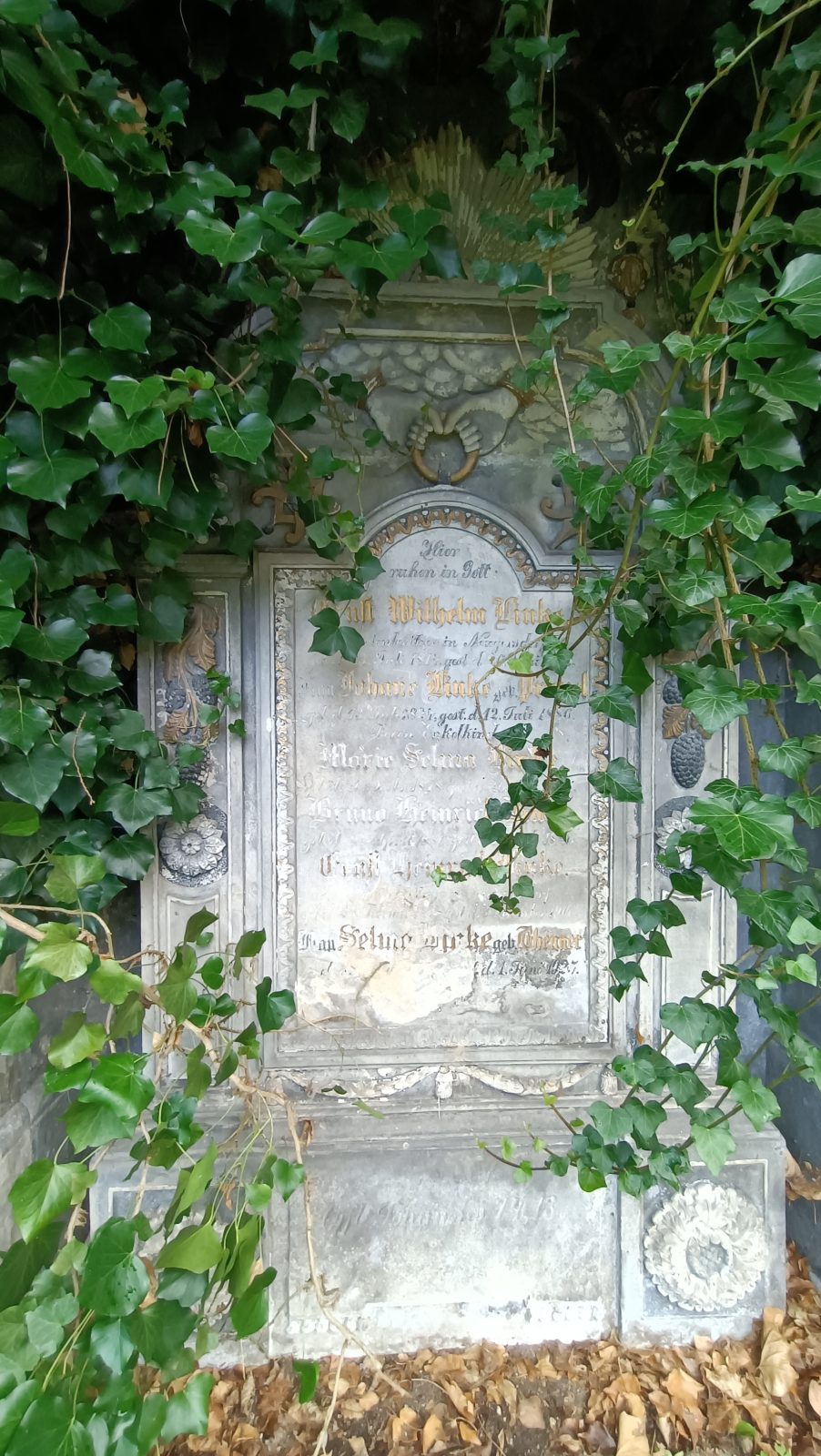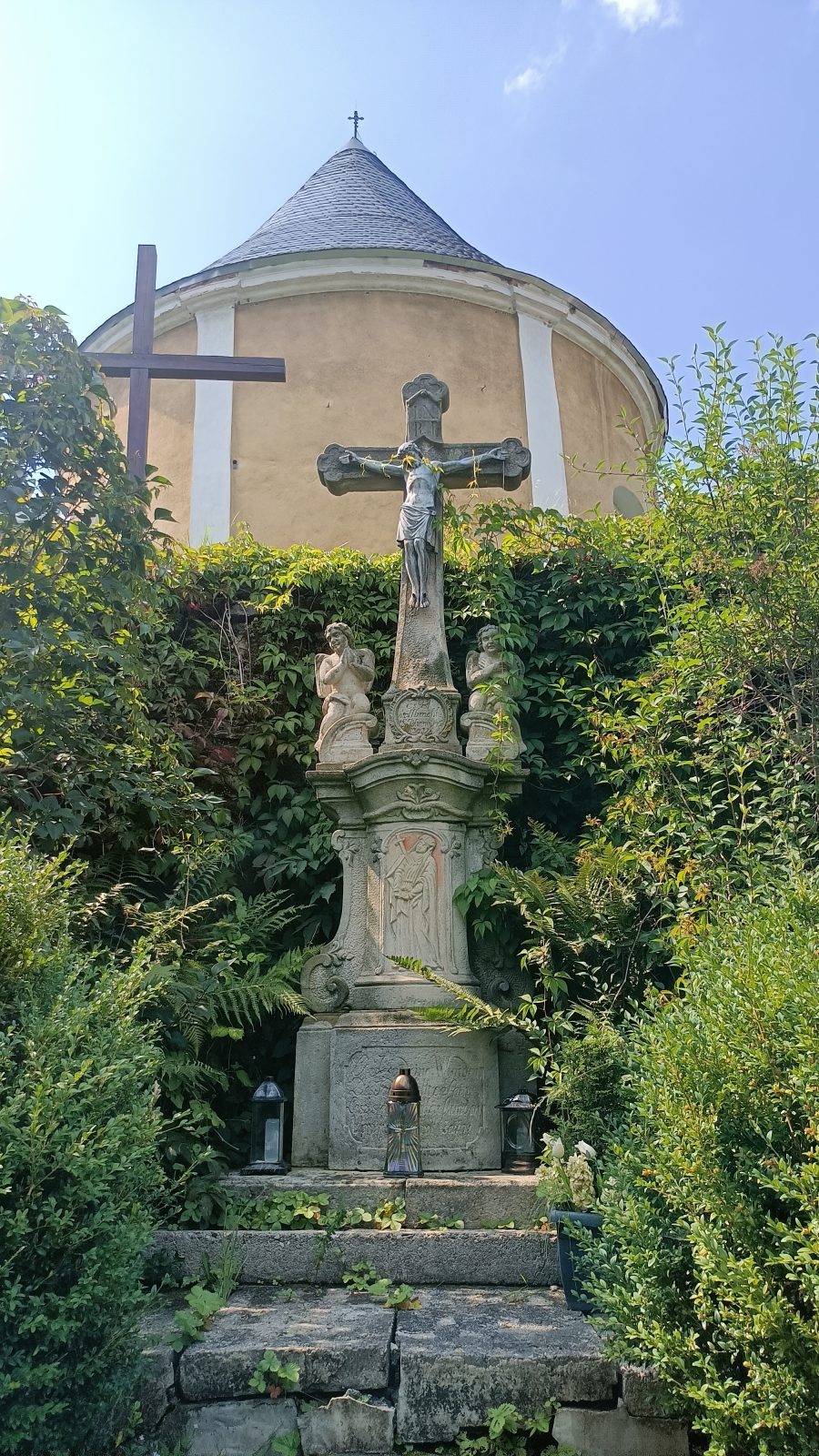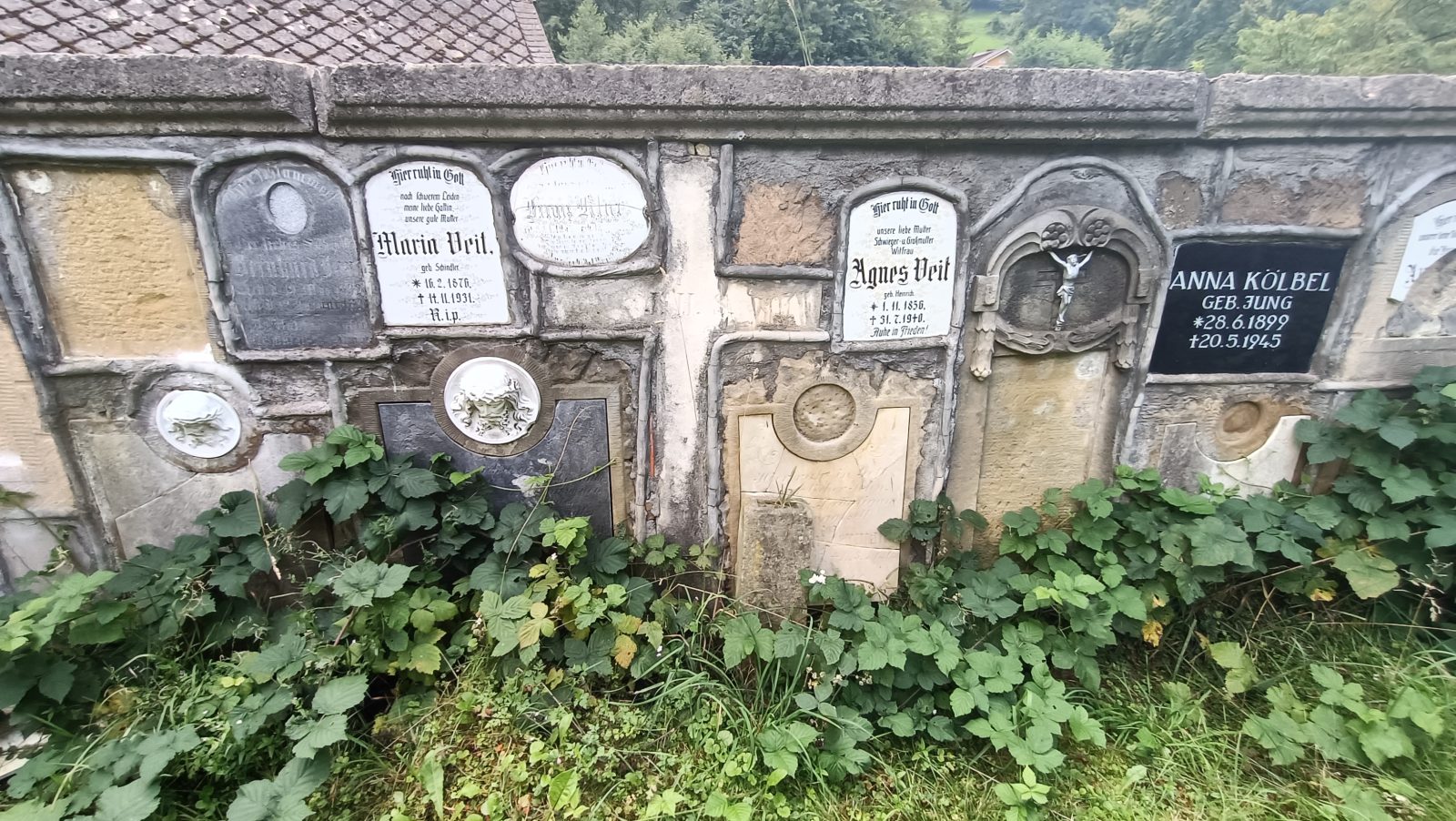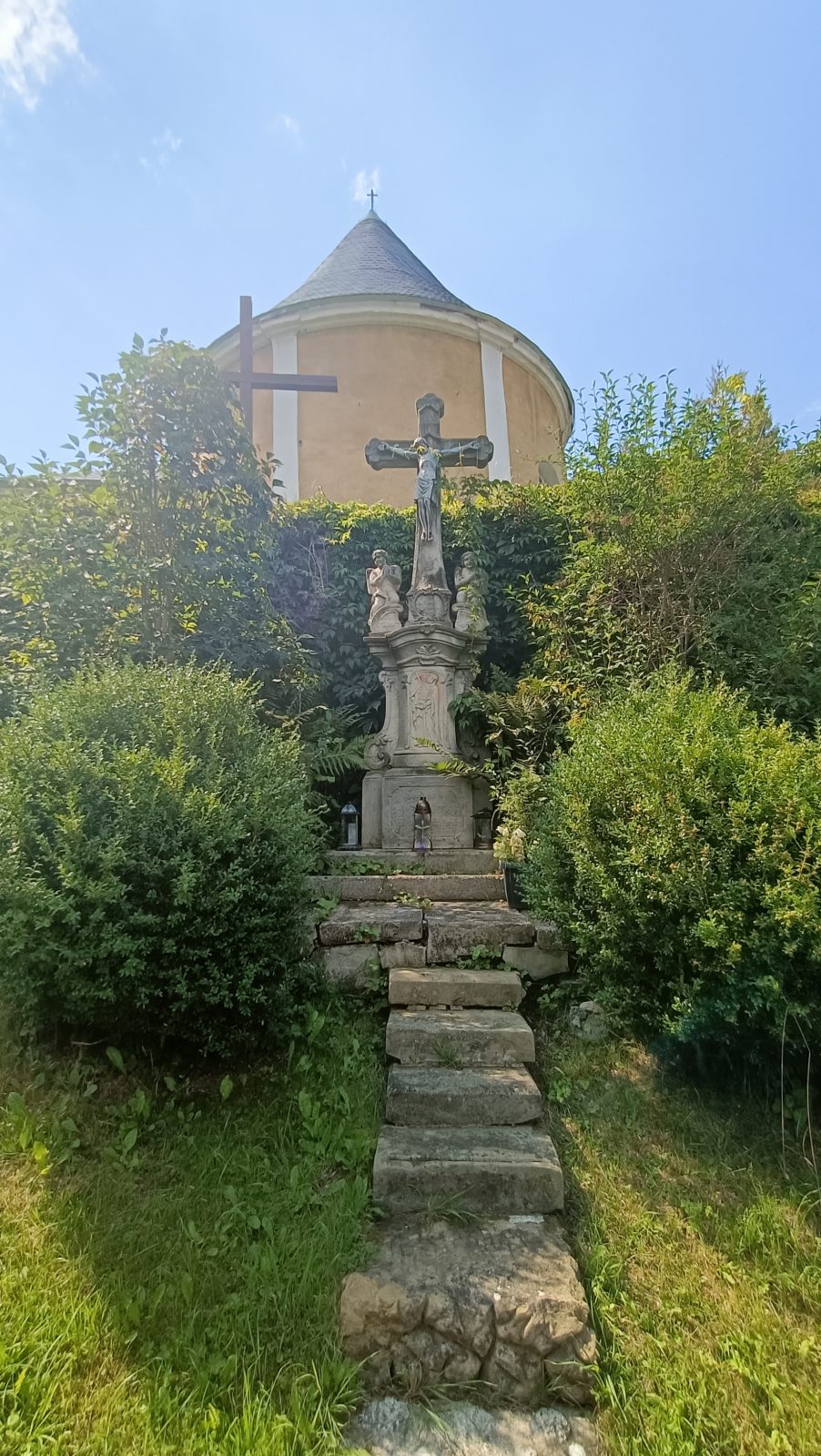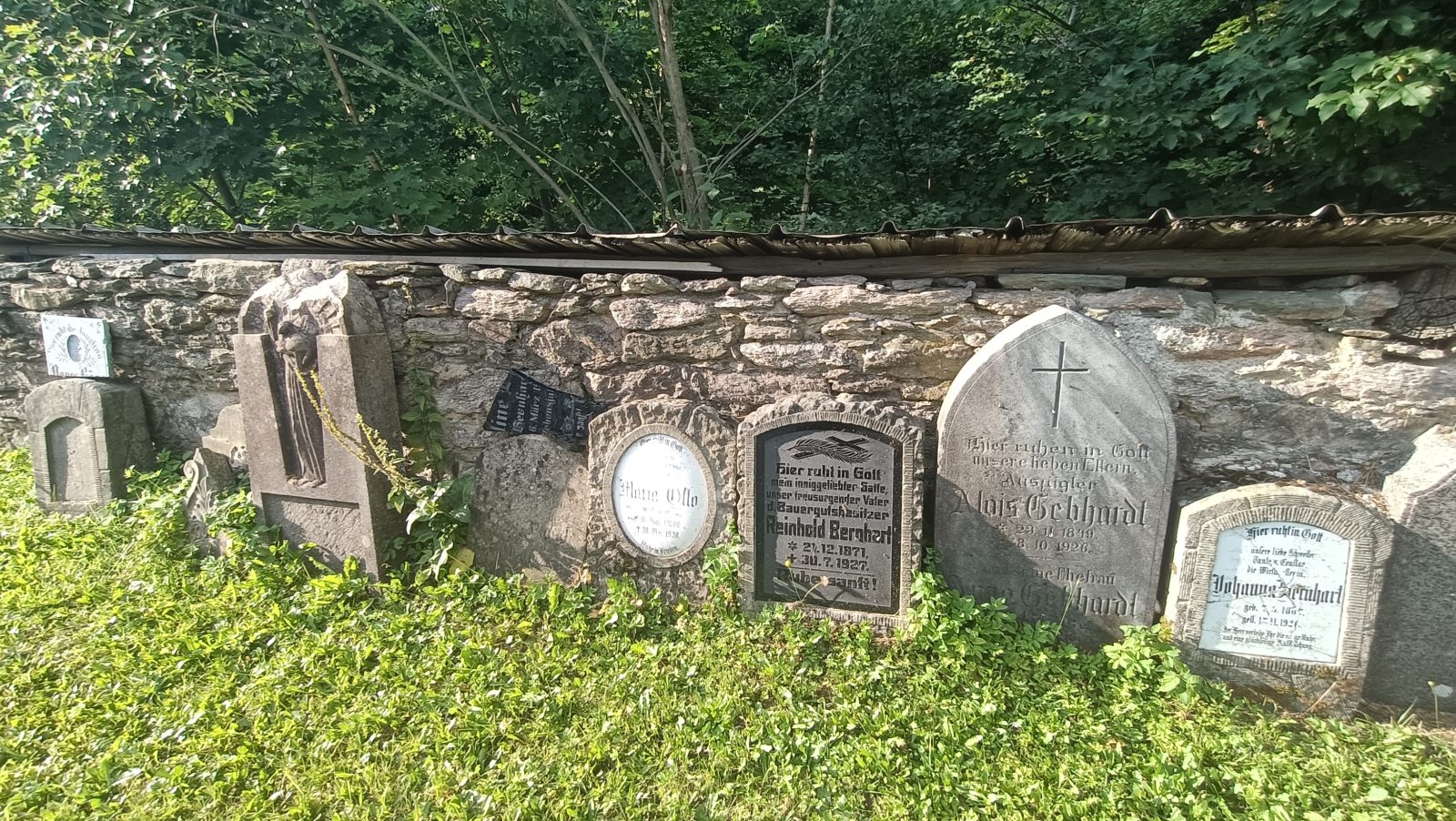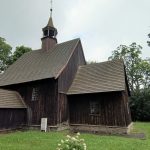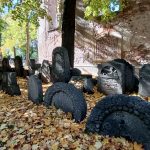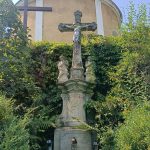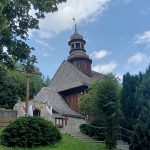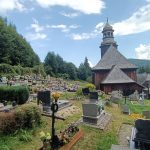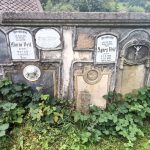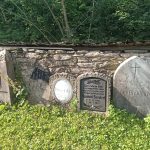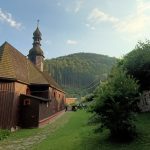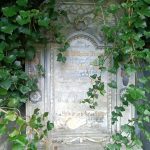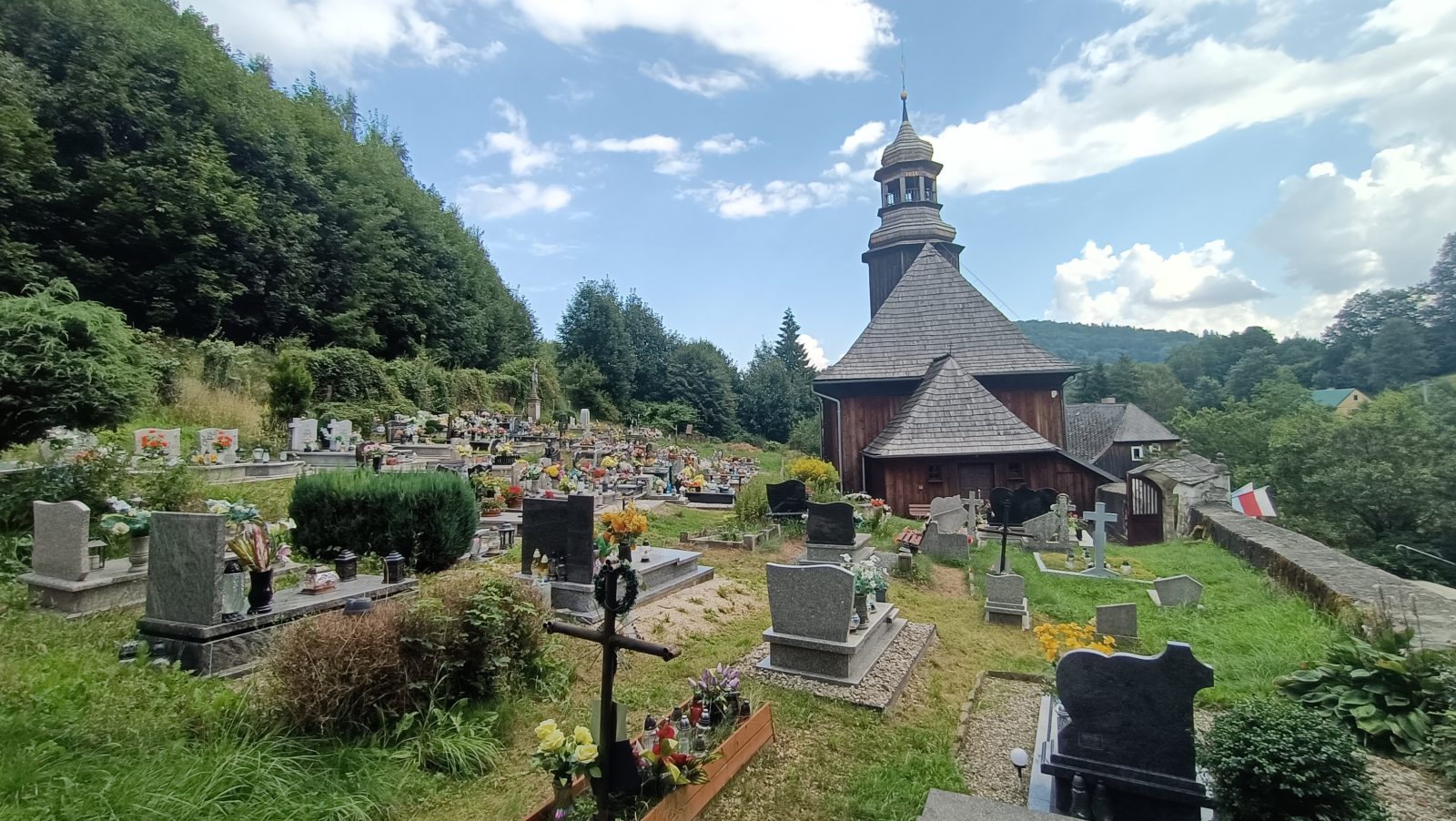
Sacral landscapes written by history – scientific project
The pilot and multidisciplinary research about the churchyard graveyards located near the Polish-Czech border is presented by scientists dr inż. Alicja Krzemińska, dr inż. Anna Zaręba from the Institute of Geography and Regional Development. The research results will be presented in the form of scientific articles, popular science lectures, and cyclically organised photo exhibitions, which will be available to see until the end of 2025. The first exhibition took place in the June of 2024, and the next on the 25th of October 2024.
How did you become interested in this specific area?
Dr hab. Alicja Krzemińska from the Department of Geomorphology, in the Institute of Geography and Regional Development from the Faculty of Earth Sciences and Environmental Management of the University of Wrocław:
– The first research was a pure coincidence. While conducting field research on one of the smaller graveyards in Lesica, we noticed excavated and destructed tombstones, which interested us enough to come back to those regions for a further study.
First research?
– The first research concerned small graveyards in the district of Międzylesie. In 2008, we co-wrote a monography Przemijające krajobrazy – przykościelne cmentarze Gminy Międzylesie (A. Krzemińska, A. Zaręba, A. Grochowska).
Hence, we noticed how complex the problem is, and that’s how our fascination with the topic developed.
What does it actually mean?
– For example, tree removal caused changes in the water conditions, which caused one of the graveyards a slope failure and the danger of collapse of many tombstones. Additionally, It shocked us, that no one seemed to explore the remarkable tombstones, monuments, and epitaphs. It was an amazing world, like from The Secret Garden. We discovered many hidden gems. It was not until two years ago, that we obtained the funds to conduct the project, as the topic was not considered “catchy” enough. We immediately started researching over 105 graveyards, many of which were often forgotten.
Graveyards are inseparable parts of landscapes, filled with many symbols connected to Sacrum. Did you change your perception of graveyards during that research?
To some degree, yes. We have gained much more respect for those places. Reading the tombstones feels like reading the history of people who lived there, allowing us to imagine how life used to look here in the past. Graveyards are this kind of sphere, which requires a great deal of respect. We noticed, that the moment we step into the graveyard, we automatically become silent, to pay respect for the sanctuary.
Moreover, the fauna is incredible, for example, we located a monumental tree – lime, whose breast height diameter was 9 meters. Astonishing!
Do the researched objects differ?
– Of course, those graveyards differ in size, although they are usually still relatively small. All kinds of factors influence the diversity of graveyards, such as the degree of deformation and devastation, but also they differ in the number of tombstones, particularly historic ones.
What do the graveyards signify to smaller societies and the bigger, urban ones?
– These are two different worlds. Smaller graveyards mean smaller societies, in which many members are familiar with each other, unlike bigger societies, where passersby do not usually interact. Churchyard graveyards differ as well from village graveyards. The latter are located outside the villages for sanitary reasons, not like the former in the hearts of villages.
What about the tombstones themselves? What do they signify?
– We found a variety of unique tombstones, which tell the stories of both whole societies but also individuals. Their love lies, beliefs, remembrance, and also their social classes can all be observed in epitaphs.
The scientific research itself, what characteristic does it contain?
– I think the project differs from others touching on the subject of graveyards, as we worked in a multidisciplinary team containing a historian, a landscape architect and a planner, as well as an environmental protection specialist.
Why did you decide on this specific team?
– Because areas of those small graveyards influence the space in multiple ways. They are sacral areas written by history with interesting architecture, connected to the structures of the villages. Moreover, those landscapes are significant to nature, as they often are an inseparable part of local fauna and flora.
What was the aim of the research and what do you plan to do next?
– The aim of the research was a preliminary inventory and analysis of the churchyard graveyards located near the Czech-Polish border located in the Lower Silesian. This is the first pilot research, which we hope will be continued throughout the years. Besides, we aim to popularise the project via social media and its web.
Additionally, we are going to present the results of our research in the form of photo exhibitions and popular scientific lectures until the end of 2025.
We encourage you to read the results of the research.
********************
The title of the project: Cottage churchyard graveyards located next to the Polish-Czech border in the Lower Silesian. Financed by the Ministry of Education and Science, the Program of Studies for the Society, research area: Humanism-Society-Identity; the amount given for the research: PLN 485 970.00.
Team:
– Dr hab. Alicja Krzemińska, Dr inż. Anna Zaręba from the Department of Geomorphology, in the Institute of Geography and Regional Development from the Faculty of Earth Sciences and Environmental Management of the University of Wrocław:
– Dr inż. Anna Dzikowska, the Faculty of Security Studies of the Military University of Land Forces.
– Dr Kamil Pawłowski, historian, cultural heritage preservation activist, Provincial Heritage Monuments Protection Office in Wrocław Delegation in Wałbrzych.
The scientific research can be observed on Facebook: https://www.facebook.com/pwcmentarze
On X: https://x.com/pwcmentarze.
The web is being currently created, soon can be found here: www.pwcmentarze.uwr.edu.pl
Complied by Katarzyna Górowicz-Maćkiewicz
Translated by Jakub Bucholc (student of English Studies at the University of Wrocław) as part of the translation practice.
